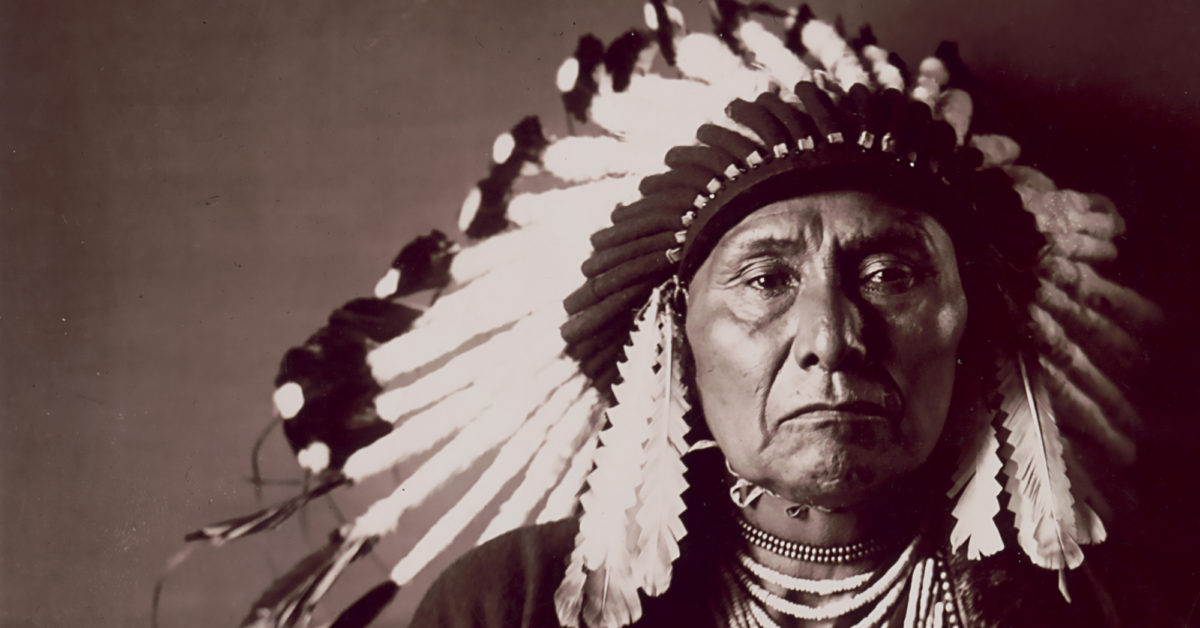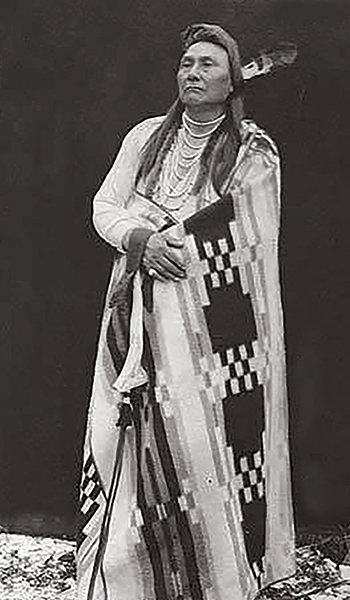
Chief Joseph (1840–1904) of the Nez Perce remains among the most celebrated American Indians of the 19th century, thanks to period photographs, books, magazine articles, paintings and public sculptures. Sculptors Dennis Burt, Doug Hyde and Georgia Bunn have each depicted the famed chief, known in his own language as Hin-mah-too-yah-lat-kekt (Thunder Rolling Down the Mountain). There are similarities in their striking works, of course, but notable differences set them apart from other sculptural efforts, including Alonzo Victor Lewis’ half dozen portrait heads of the warbonneted chief (placed in 1928 at key battlegrounds of the 1877 Nez Perce War), or Virgil “Smoker” Marchand’s expressionistic rusted steel depiction of the chief (installed in 2010 in Nespelem, Wash., home to the Nez Perce reservation and Joseph’s grave).
In 1985 Burt, of Enterprise, Ore., produced a life-size bronze of Chief Joseph after encouragement by a descendant of Nez Perce war leader Looking Glass and other tribal members. The modeling took about six weeks to complete before Valley Bronze foundry, in nearby Joseph, Ore., cast the figure. Enterprise businessman Thomas R. Warde purchased the work for installation in a namesake park the businessman donated to the city in 1995. This first public monument in Wallowa County offers a direct tie to the Nez Perces, as the surrounding Wallowa Valley is their traditional homeland.
Burt applied different patinas to the finish so that with time and weather the statue would reflect a range of evocative colorations. The base of the statue, Joseph’s shirt and a decorative band on his blanket have since turned a greenish hue, while the figure’s face, hands and robes retain their rich bronze glow. A patina variation in the figure’s hair, offset by bronze strips of rawhide, makes it appear the elderly Joseph is graying. The overall effect lends a stoic pride and dignity to Burt’s rendering of the Nez Perce legend.
Hyde, an Oregon-born sculptor of Nez Perce, Chippewa and Assiniboine ancestry, studied at both the Institute of American Indian Art in Santa Fe, N.M., and the San Francisco Institute of Art before enlisting in the U.S. Army. On his second tour of duty in Vietnam he was seriously wounded by a grenade. Returning stateside to recuperate, he resumed sculpting, ultimately opening his own studio in Prescott, Ariz.
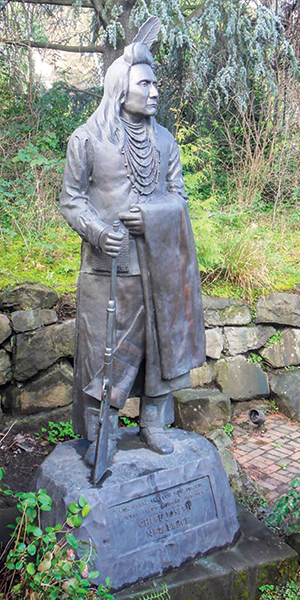
Doug Hyde’s 1998 bronze graces Portland State University’s Native American Student & Community Center. (Fred F. Poyner IV) 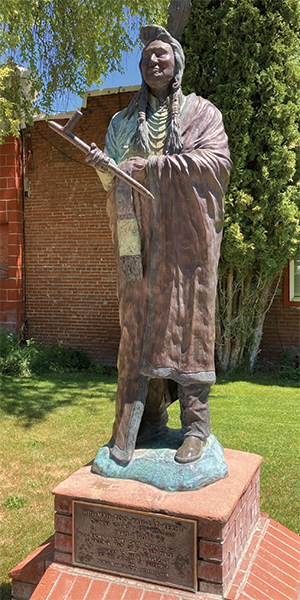
Dennis Burt’s 1985 bronze “Hin-mah-too-yah-lat-kekt (Thunder Rolling Down the Mountain)” stands in Enterprise, Ore. (Fred F. Poyner IV) 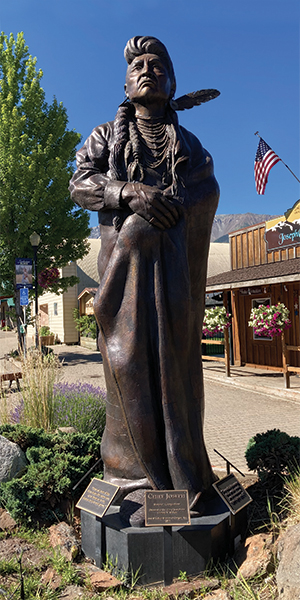
Dedicated in 2012, Georgia Bunn’s statue stands in namesake Joseph, Ore. (Fred F. Poyner IV)
In 1998 Hyde completed his life-size bronze of the Nez Perce legend. Standing resolute and proud, his Chief Joseph holds a Winchester lever-action rifle, the barrel in his right hand, its butt resting on the ground. The artist initially made two castings—the first going to Portland State University for display outside its Native American Student & Community Center, the second donated to the Smithsonian’s National Museum of the American Indian for display at the museum’s Cultural Resources Center in Suitland, Md. In 2007 the Phoenician Resort in Scottsdale, Ariz., installed a third casting of Hyde’s statue at the entrance to the hotel. Six years later a fourth casting found a home in the lobby of the Clearwater River Casino & Lodge, in Lewiston, Idaho, a property owned and operated by the Nez Perce tribe.
Oregon-based sculptor Georgia Bunn started modeling her larger-than-life statue of Joseph after consultation with members of the Nez Perce tribe, who wanted the chief to be depicted as a diplomat, ambassador and negotiator rather than a war leader. She referenced a 1901 portrait of Joseph for her model, first rendered as a maquette, then as a full-size, 12-foot figure in her Medford studio. “As an Anglo-Saxon artist, my hands are yours,” she told the Nez Perces, who voiced their approval at several stages in the modeling process before Valley Bronze cast the figure. The oldest living member of the tribe at the time attended the July 27, 2012, dedication of Bunn’s statue in Joseph, Ore.
The prospect of new statuary of Chief Joseph continues to hold the public’s interest. In 2015 officials in both Oregon and Idaho expressed a desire to represent their respective states in the National Statuary Hall at the U.S. Capitol in Washington, D.C., with sculptures of the Nez Perce chief. While no new statues of the chief have been added to the hall, seven states have among their representative statues figures of seven American Indians and one Polynesian Islander (Oklahoma boasting two such statues).

